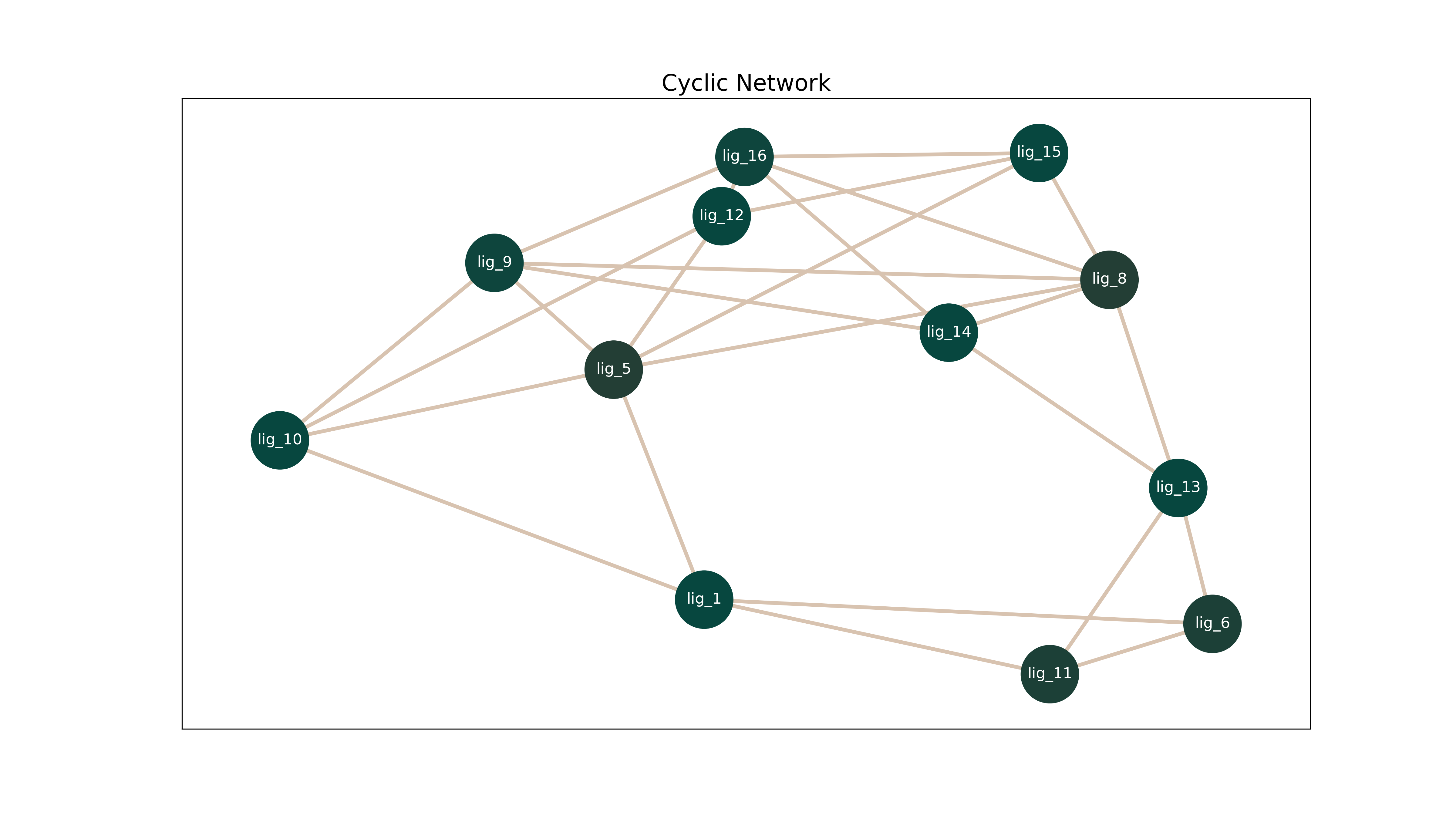
Konnektor is a package supporting you in planning your free calculations. It contains multiple algorithms and tools for network planning, that make setting up the calculation plans much easier. As an example imagen you are given a set of drug candidates that shall be ranked with relative binding free energies. In theory you could calculate all the possible network transformations, in order to get your ligand ranking (we call this a Maximal Network). However this leads to an explosion in time and compute cost, therefore we need more efficient ways on how to caluclate a drug candidate ranking. From a thermodynamic perspective not all transformations are actually required to retrieve a ranking. In fact you only need one conection per small molecules to the others in order to get the ranking, like for example in Star Networks or Minimal Spanning Tree (MST) Networks. However we found the very efficient networks to be sensitive to transformation failures, this can be solved with network building algorithms, that are slightly more redundant.
Ontop of the described ligand network planners, Konnektor gives access to tools, that allow for example to concatenate networks or delete transformations of a network. Analysis of networks, like calculating graph scores, getting the connectivities of network nodes or calculating the network robustness are available too. Last we want to bring to your attention our Network visualization tools and the provided interactive network visualization widget for IPython like in Jupyter-Lab/Notebooks.
👷👷👷👷👷👷👷👷👷👷👷👷👷👷👷👷👷👷👷👷👷👷👷👷👷👷👷👷👷👷👷👷👷👷👷👷👷👷👷👷👷
WARNING: Konnektor is under development and is in its beta phase!
This translates to the core features are implemented and we hope to only introduce minor changes to the repository form here, i.e. fixing bugs.
👷👷👷👷👷👷👷👷👷👷👷👷👷👷👷👷👷👷👷👷👷👷👷👷👷👷👷👷👷👷👷👷👷👷👷👷👷👷👷👷👷
Several Network layout generating algorithms are implemented in Konnektor, with different advantages and disadvantages. From an algorithmic perspective most of the algorithms are actually a reduction method of the Maximal Network. To speed-up the Maximal Network Algorithm we implemented an parallelization scheme to it. Below you can find some of our layouts:
Konnektor implements tools, that allow for example to merge (if a node is shared in the networks) or concatenate (if no node is shared) networks, append single molecules (nodes) to a network or delete transformations/molecules from a network.
Another goal of Konnektor is to go beyond the standard network layout algorihtms and allow easy implementation of more complex network algorithms. This is achieved by combining the Tools and Network Generator Algorithms, to build up to more advanced workflows.
# Here we generate some input data.
from konnektor.data import get_benzene_ligands
compounds = list(filter(lambda x: not x.name in ["lig_2", "lig_3", "lig_4", "lig_7"],
get_benzene_ligands()))
# Pick your Favourite Network layout with favourite AtomMapper and Scorer
from openfe.setup import KartografAtomMapper, lomap_scorers
from konnektor.network_planners import CyclicNetworkGenerator
networker = CyclicNetworkGenerator(mapper=KartografAtomMapper(),
scorer=lomap_scorers.default_lomap_score)
# Generate Network
network = networker.generate_ligand_network(compounds)
network.name = "Cyclic Network"
# Visualize the generated network
from konnektor.visualization import draw_ligand_network
fig = draw_ligand_network(network=network, title=network.name)
fig.show()Konnektor can be installed via the package following package managers:
pip install konnnektorThe developing setup of Konnektor works like this:
git clone https://github.com/OpenFreeEnergy/konnektor.git
cd konnektor
mamba env create -f environment.yml
mamba activate konnektor
pip install -e .
This library is made available under the MIT open source license.
The OpenFE development team.
Thanks to Enrico Ruijsenaars, Jenke Scheen and Josh Horton for great discussions!





